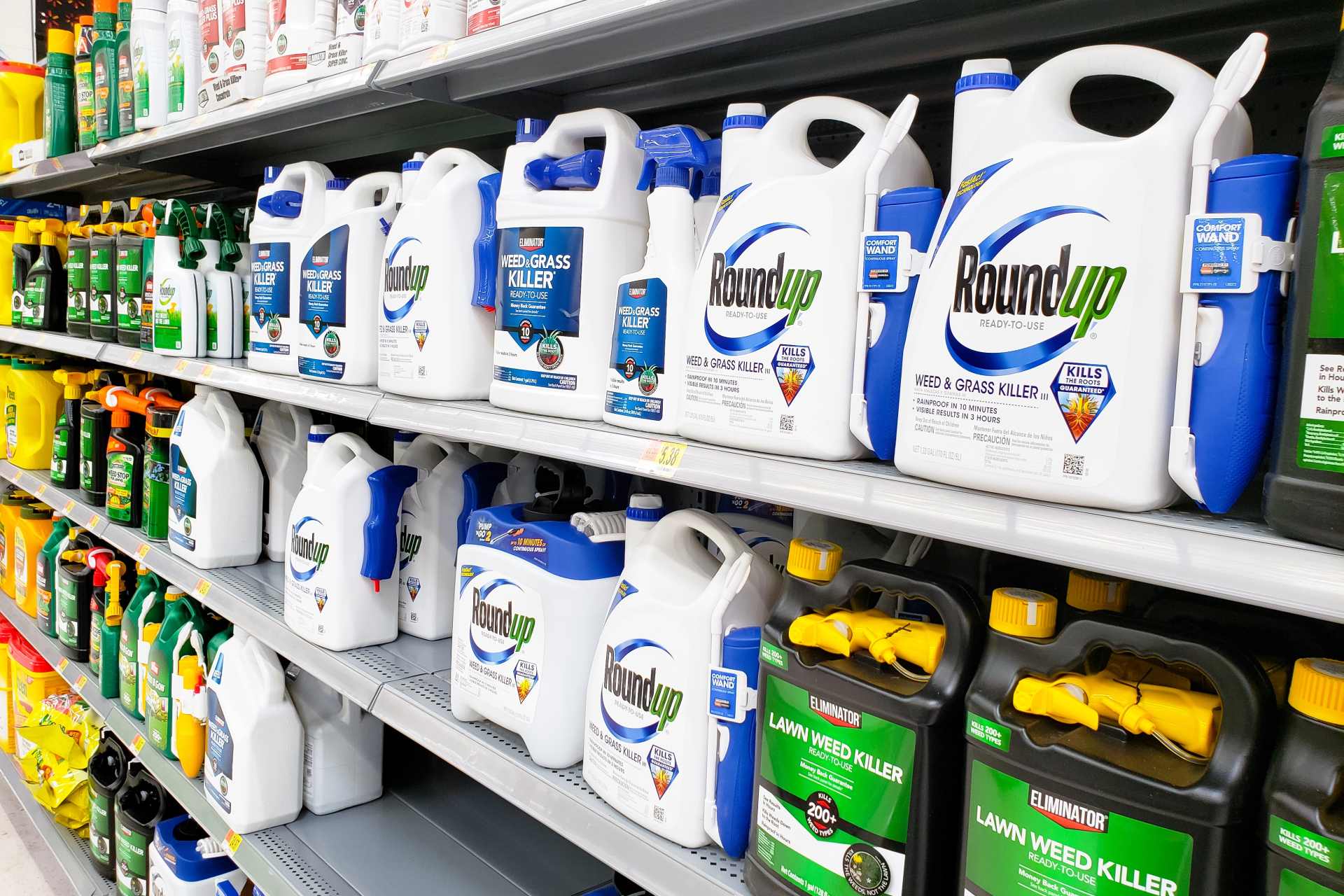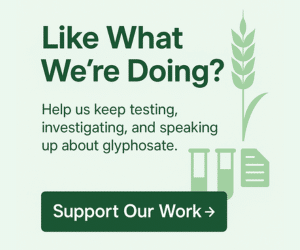It was once sold as the safe, modern way to kill weeds.
Backyard gardeners sprayed it freely. Farmers were told it was better for the environment. Councils used it on roadsides, playgrounds, and school fields.
But behind the marketing glow of Roundup®, a very different story has been unfolding — one that involves mounting cancer research, billion-dollar lawsuits, and growing concern from scientists, regulators, and the public.
At the centre of the legal and scientific debate is non-Hodgkin lymphoma — a type of blood cancer that affects the lymphatic system and has been repeatedly linked to glyphosate-based herbicides. That’s not just media spin. It’s a claim that’s now been tested in courtrooms, backed by multiple peer-reviewed studies, and even acknowledged — albeit reluctantly — in settlement agreements involving tens of thousands of cases.
But let’s be clear: Roundup isn’t just glyphosate.
Roundup® is the brand name for one of the world’s most widely used glyphosate-based weedkillers, originally manufactured by Monsanto as an industrial pipe cleaner before it was repurposed for agriculture. While glyphosate is the active ingredient, the final product — what actually gets sprayed — also contains other ingredients like surfactants, solvents, and additives. These “inert” ingredients may be anything but inert when it comes to human health, and few of them are disclosed on the label.
That distinction matters — especially here in New Zealand, where regulators continue to assert that glyphosate is safe when used as directed, while ignoring the role of formulations in real-world exposure and risk.
So how strong is the link between glyphosate-based herbicides and non-Hodgkin lymphoma? What does the research say? And what can we learn from the legal fallout Bayer is still facing today?
Let’s take a closer look.
What Is Non-Hodgkin Lymphoma?
Non-Hodgkin lymphoma (NHL) is a type of blood cancer that starts in the lymphatic system — the body’s internal highway for fighting infection and moving fluid. It develops when certain white blood cells, called lymphocytes, begin to grow and multiply uncontrollably. These abnormal cells can collect in the lymph nodes, spleen, bone marrow, and other parts of the body, eventually impairing the immune system and spreading to other organs.
It’s not a single disease, but rather a category of closely related cancers — with more than 60 known subtypes ranging from slow-growing (indolent) to aggressive and fast-moving forms. One such subtype, hairy cell leukemia, has been explicitly linked to glyphosate-based herbicide exposure in recent research.
Symptoms can include:
- Swollen lymph nodes
- Unexplained weight loss
- Fever
- Night sweats
- Fatigue
- Persistent infections
While some people respond well to treatment, others face relapses, long-term health consequences, or life-shortening outcomes. The causes of NHL aren’t always clear — but exposure to certain chemicals, including pesticides and herbicides, has been identified as a major environmental risk factor.
That’s where Roundup comes in.
As studies mount linking glyphosate-based herbicides to elevated NHL risk, so too does the public pressure to revisit how these products are approved, regulated, and used — not just overseas, but right here in New Zealand.
Scientific Evidence Linking Glyphosate to Non-Hodgkin Lymphoma
For decades, Roundup® was marketed as safe — a modern herbicide that posed little to no risk to human health. But as independent research caught up with corporate reassurance, a different picture began to emerge. Study after study started raising a serious question:
Could long-term exposure to glyphosate-based herbicides increase the risk of non-Hodgkin lymphoma?
The answer isn’t simple — but it’s becoming harder to ignore.
A Closer Look at the Evidence
2023 — A study in Leukemia & Lymphoma
Researchers found that glyphosate-based herbicides were linked to increased risk of non-Hodgkin lymphoma, including a specific subtype known as hairy cell leukemia. The authors called for more targeted monitoring of exposed populations and urged regulators not to dismiss formulation risks.
2023 — Systematic Review in Chemosphere
A sweeping analysis of over 2,500 studies, narrowing in on 175 that met strict criteria, concluded that glyphosate and its formulations exhibit multiple key characteristics of carcinogens. The authors found strong mechanistic evidence supporting glyphosate as a probable human carcinogen, including pathways that align with how NHL develops.
2021 — Environmental Health (European case-control study)
A large case-control study across six European countries found elevated risk for follicular lymphoma in individuals with medium-to-high exposure to glyphosate-based herbicides. Although not all NHL subtypes showed a significant association, the study highlighted the potential vulnerability of specific cancer types.
2021 — Clinical Lymphoma, Myeloma & Leukemia (Review article)
This medical review pulled together existing studies and found that longer-term exposure to glyphosate-based herbicides correlated with a higher risk of non-Hodgkin lymphoma. It wasn’t just one-off or high-dose events — it was chronic, occupational, or environmental exposure over time.
2020 — La Medicina del Lavoro (Meta-analysis)
This updated meta-analysis found a small, non-significant increase in NHL risk for people with the highest exposure to glyphosate. While overall associations were modest, the authors noted a trend toward increased risk in the diffuse large B-cell lymphoma (DLBCL) subtype.
2019 — International Journal of Epidemiology (AGRICOH pooled cohort analysis)
This study pooled data from large agricultural cohorts in France, Norway, and the USA. While it found no strong overall link to NHL, it did report a raised hazard ratio for DLBCL when adjusted for other pesticide exposures — suggesting that the picture may be more complex than single-chemical assessments allow.
2019 — Meta-analysis in Mutation Research
A team led by University of Washington researchers found that individuals with high exposure to glyphosate had a 41% increased risk of developing NHL. The paper highlighted the consistency of human epidemiological data with lab-based findings in animals.
2019 — Environmental Sciences Europe (Meta-analysis)
A separate meta-analysis led by Schinasi et al. focused on glyphosate exposure and NHL, noting a “compelling link” between higher exposure and increased risk. The study also highlighted concerns about publication bias and under-reporting in industry-funded research.
2018 — Journal of the National Cancer Institute (AHS cohort)
This U.S.-based Agricultural Health Study, often cited by regulators, found no association between glyphosate use and overall NHL. However, the study has been criticised for its short follow-up time, possible misclassification of exposure, and focus on the active ingredient glyphosate, not the full Roundup® formulation.
No one’s claiming glyphosate is the only cause. But when risk is preventable, ignoring it becomes a choice.
These studies don’t stand alone. They build on earlier findings that show genotoxicity, oxidative stress, endocrine disruption, and chronic inflammation — all pathways involved in cancer development. And while scientists may still debate the fine points, the weight of evidence is shifting — from possible risk to probable harm.
A chemical that’s never been tested as a full formulation — yet is still sold with a safety label — shouldn’t get a free pass because of regulatory habit.”
— No More Glyphosate NZ
A Landmark Legal Turning Point
While the science was catching up, something else was happening — something that forced the glyphosate question into the public spotlight in a way that even regulators couldn’t ignore.
Lawsuits. Thousands of them.
Starting in 2018, people diagnosed with non-Hodgkin lymphoma after long-term Roundup® exposure began taking Monsanto (and later Bayer) to court. These weren’t vague claims. These were gardeners, groundskeepers, council workers, and farmers — people who had used Roundup regularly, sometimes for decades. And they were alleging that the product had caused their cancer.
The courts listened.
- In 2018, Dewayne “Lee” Johnson — a California school groundskeeper — was awarded $289 million (later reduced) after a jury found that Monsanto had failed to warn users of Roundup’s cancer risk.
- In 2019, Edwin Hardeman won $80 million in a federal case, with the jury concluding that Roundup was a “substantial factor” in causing his non-Hodgkin lymphoma.
- In 2020, Alva and Alberta Pilliod, a married couple who both developed NHL after using Roundup on their property, were awarded $2 billion (later reduced to $86 million).
Since 2020, Bayer has agreed to pay more than US $10 billion to settle tens of thousands of Roundup cancer claims — and cases continue to be filed. In 2024 and 2025, several major verdicts again went against Bayer, underscoring that this issue is far from resolved.
And these lawsuits aren’t just about science — they’ve exposed a pattern of corporate behaviour. Internal documents revealed that Monsanto had ghostwritten research papers, worked to discredit independent scientists, and influenced regulatory reviews behind the scenes.
The legal system — flawed as it is — did what regulators didn’t: it held a chemical giant to account.
But even now, Roundup is still widely sold. Warnings remain minimal. And in countries like New Zealand, few people even know these lawsuits happened — let alone what they revealed.
Is Roundup Really Safe? What the Label Doesn’t Say
If you’ve ever looked at a bottle of Roundup®, you’ve probably seen it:
“Safe when used as directed.”
It sounds reassuring. Scientific. Authoritative. But what does it actually mean?
In reality, that phrase hides a troubling assumption: that the product has been fully tested for safety under the conditions in which it’s used. But as we’ve explored in other articles, that assumption doesn’t hold up — especially when it comes to formulated herbicides like Roundup.
Testing the active ingredient — not the full product
In most regulatory frameworks, including New Zealand’s, the active ingredient (in this case, glyphosate) is what gets assessed for long-term toxicity, carcinogenicity, and environmental impact. The final commercial formulation — the stuff sprayed in backyards, on roadsides, or across wheat fields — is often exempt from the same level of scrutiny.
That means surfactants, solvents, adjuvants, and other so-called “inert” ingredients aren’t tested to the same standard. And that matters, because studies have shown that formulations can be significantly more toxic than glyphosate alone — especially in terms of endocrine disruption and cellular damage.
Dose isn’t everything
Defenders often say: “It’s the dose that makes the poison.” But when it comes to glyphosate-based herbicides, it’s also the frequency, the timing, the mixture, and the method of exposure. Children playing barefoot on treated grass. Workers spraying without proper PPE. Residents breathing in drift near vineyards or pine plantations.
And let’s not forget chronic low-dose exposure — through residues in food, water, and even honey — where the cumulative effects may not show up until years later.
Regulators behind the curve
Here in New Zealand, the official line remains that glyphosate is “unlikely to be carcinogenic” and safe when label directions are followed. But that’s based on outdated assessments, incomplete testing, and an ongoing reluctance to revisit past approvals — even as international bodies, independent scientists, and courtrooms are raising red flags.
Meanwhile, no warning label.
No public education campaigns.
No warning signs on products.
And no formal review of Roundup® as a complete product.
Just silence.
It’s not about alarmism — it’s about accountability.
If a formulation carries potential cancer risk, shouldn’t users be told?
Why This Matters in New Zealand
It’s easy to read about lawsuits in the U.S. or studies in Europe and think, “That’s over there. It doesn’t apply here.” But that kind of thinking has allowed dangerous chemicals to remain in circulation long after the warning signs were visible.
Roundup is still widely used in New Zealand — on farms, vineyards, council land, forestry plantations, and home gardens. In fact, some of our most iconic exports rely on glyphosate-based herbicides to manage weeds or desiccate crops before harvest. Yet despite this widespread use, public awareness remains low, and regulatory oversight remains narrow.
What MPI and NZ regulators won’t say out loud
New Zealand’s regulators continue to rely on outdated or limited assessments of glyphosate’s safety. They maintain that glyphosate is not likely to be carcinogenic, based on selective reviews and industry-backed data — while largely ignoring the formulation risk, the real-world exposure pathways, and the growing global body of concern.
There has been no formal review of glyphosate-based herbicides as a full formulation. No precautionary warning labels. And little interest in investigating whether vulnerable groups — like children, pregnant women, rural communities, or council contractors — may be disproportionately affected.
And yet, glyphosate has been found in honey sold here.
It’s been detected in our food.
It’s been found in waterways, soil, and imported oats.
And when residue limits are breached? Often, nothing happens.
No recall. No fine. No public alert. Just quiet acceptance.
A public left in the dark
Most New Zealanders are never told what they’re really being exposed to — or what’s at stake. Few know that legal limits are regularly exceeded. Fewer still realise that many of those limits have been quietly raised over time to match industry convenience, not public health.
We’re not even given the choice to opt out, because products like Roundup aren’t required to list all ingredients. And because regulators treat the “active” ingredient as the only one worth worrying about, the risk to users — and to the wider public — remains downplayed by design.
We’re told it’s safe.
But safe for whom? And based on what?
Taking Action: What You Can Do
You don’t need a medical degree or a legal background to see what’s happening here.
Glyphosate-based herbicides like Roundup® are still being used — and sold — despite mounting evidence of harm. Regulators continue to rely on outdated science. Companies continue to downplay risk. And the public continues to be kept in the dark.
But you’re not powerless.
Limit your exposure
Stop using glyphosate-based weedkillers at home. Avoid walking barefoot on freshly sprayed areas. Choose certified organic when possible — especially for crops likely to be sprayed before harvest, like wheat, oats, and cereals. Washing produce may help reduce some surface residues, but glyphosate is often absorbed into the plant, meaning it can’t simply be rinsed away.
Ask questions
Ask your council what they’re spraying. Ask your child’s school what weedkillers they use. Ask your MP why our regulatory system allows a chemical linked to cancer to be sold without full disclosure or testing of its formulation.
Support independent testing
The government isn’t doing it — but we are. No More Glyphosate NZ is testing New Zealand food products for glyphosate and related residues, because someone has to. Your donations fund this work, and every dollar helps us keep the pressure on.
Spread the word
Share this article. Start the conversation. Don’t let this issue slip through the cracks — because the science is real, the lawsuits are real, and the risk is real.
No one’s claiming glyphosate is the only cause.
But when risk is preventable, ignoring it becomes a choice.
We’re choosing not to ignore it.
We hope you’ll join us.
Further Reading
At this point, we’d normally provide a full list of references — but since many of the key studies, lawsuits, and legal milestones have already been cited throughout the article, we’ll leave you with something different.
If you want to dive deeper into the real-world stories behind the headlines — the courtroom drama, the science suppression, the citizen fightback — these book reviews from our site offer an essential next step.
Book Reviews on NoMoreGlyphosate.nz
Toxic Legacy by Stephanie Seneff
A provocative look into how glyphosate may be silently undermining human health — and why regulators have looked the other way.
The Monsanto Papers by Carey Gillam
An investigative journalist’s inside view of the lawsuits that revealed Monsanto’s playbook for defending Roundup at all costs.
Whitewash by Carey Gillam
A powerful exposé on Monsanto’s influence over science, regulation, and the media — and how the truth was buried for decades.
Unstoppable by Zen Honeycutt
One mother’s journey to uncover what’s really in our food, and how grassroots testing and activism are changing the narrative.
We believe everyone has the right to know what they’re being exposed to — and the right to ask better questions about the chemicals in our food, water, and environment. These books (and the stories behind them) can help you connect the dots.
Because once you see the pattern, you can’t unsee it.
Image Source & Attribution
We’re grateful to the talented photographers and designers whose work enhances our content. The feature image on this page is by PBT.




